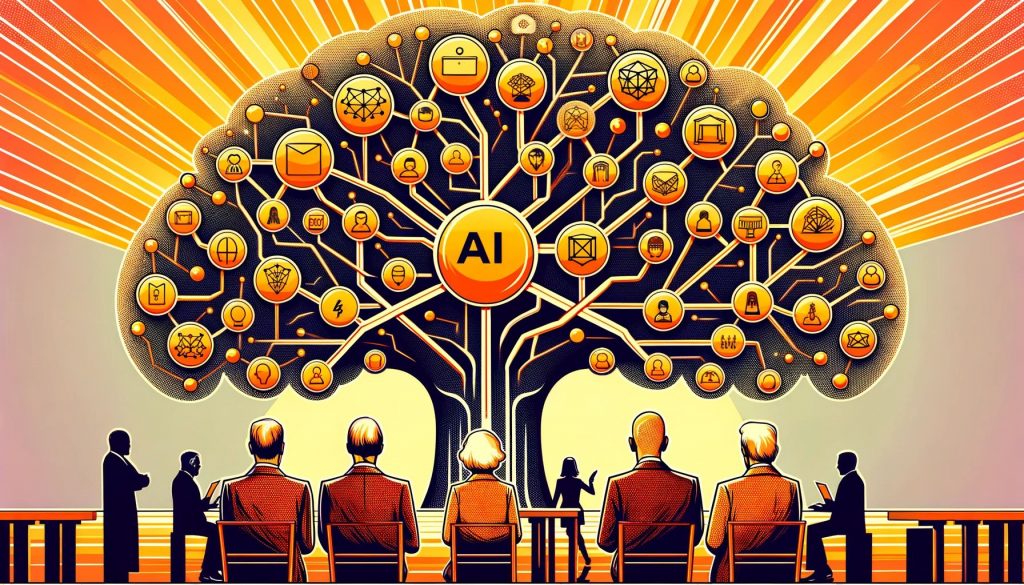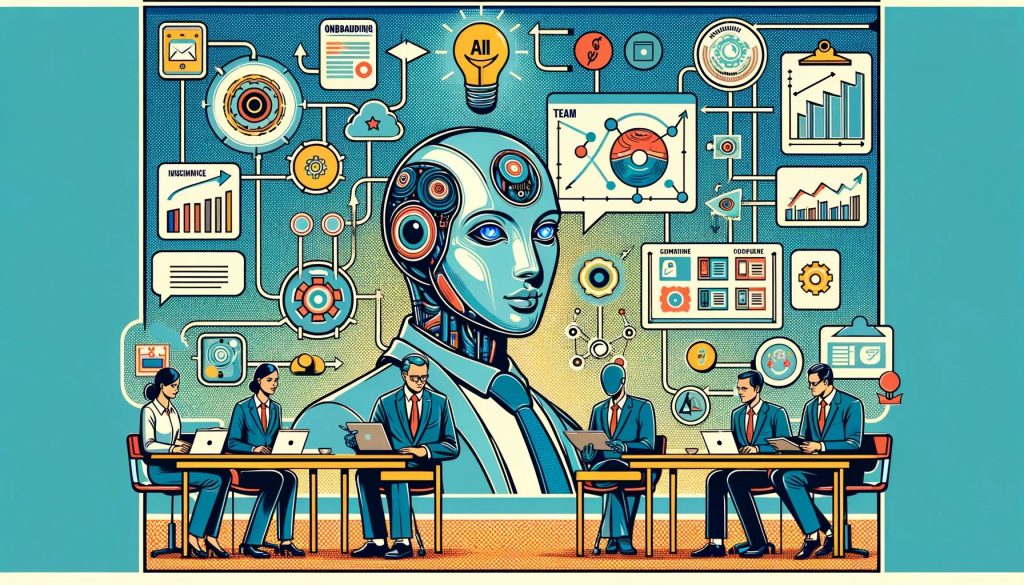Warren Buffett famously noted that ‘someone’s sitting in the shade today because someone planted a tree a long time ago.’
Pension risk transfer, or PRT, did not just pop up overnight. It’s got history. Think of it as a response to a big problem: companies promising pensions they later find tough to keep. This dilemma grew as life expectancies increased and market volatility became the norm. Companies realized they couldn’t keep up with the long-term pension promises they made. It was too risky, too unpredictable.

PRT offered a solution where companies offload these pension obligations to insurers. This shift did not happen in a vacuum. It was driven by changes in how we work, live, and how long we do both. The fiscal crisis of 2007-2008 was a wake-up call too. It showed the risks of managing long-term pension plans in an unstable economy.
So, PRT is more than a financial tool. It reflects our evolving work-life landscape, changing demographics, and economic shifts. It is about companies trying to stabilize their future in an unpredictable world. That is the gist of its history.
But how does generative AI fit into this? Let’s find out.
Role of Generative AI in Pension Risk Transfer (PRT)

In the PRT world, Generative AI models are like super-efficient assistants. They do not just analyze data; they generate forecasts, simulations, and even financial reports. Imagine feeding it years of pension data, market trends, and economic forecasts. What you get in return are insights and models that show you how pension risks can play out over the next decade or more. It’s like having a crystal ball, but backed by data, not magic.
Distinction between Generative AI and Traditional Analytical Models
Traditional analytical models rely heavily on past data and set algorithms. They are good at saying, “Based on what happened before, this is likely to happen again.” But they are not great at adapting to new, unseen scenarios.
Generative AI models, on the other hand, are all about innovation and adaptation. They don’t just rely on old patterns. They imagine new ones, like a chess player thinking several moves ahead. They take in current data, learn from it, and then simulate what could happen in various scenarios. This is incredibly useful in PRT, where the landscape is constantly changing with market conditions, demographic shifts, and policy changes.
Here’s the best part – Generative AI does not get tired. It can churn through millions of data points without breaking a sweat. It does not care if Company X traditionally had a lower risk than Company Y. It looks at what is happening now and what could happen in the future. This means you get unbiased, fresh perspectives on risk – something traditional models can’t always provide.
Generative AI Use Cases in Pension Risk Transfer (PRT)

- Analyzing Financial Status: Generative financial models built and monitored by human experts process extensive datasets including market trends, historical pension fund performances, and economic forecasts. Their function is to help in providing a nuanced financial analysis, finding correlations and trends that might influence the financial stability and prospects of pension funds.
- Legal and Compliance Aspects: The use of natural language processing (NLP) within generative systems allows for the interpretation and monitoring of pension laws and regulations. This involves not just scanning legal texts but analyzing case law, regulatory updates, and compliance guidelines under human guidance. The AI, through simulations, helps assess the impact of various regulatory changes on pension risk transfer strategies.
RFP Analysis and Risk Factor Extraction
- Data Quality and Consistency Checks: Here, AI systems are programmed to use algorithms for assessing data quality, including detecting anomalies and inconsistencies. This process involves cross-referencing data against multiple sources to base analyses on reliable, updated information.
- Identification of Key Risk Indicators: Predictive analytics and pattern recognition algorithms are applied to analyze historicalRequests for Proposals (RFPs) and current market data. These AI-driven processes, overseen by human experts, aim to find risk indicators like changes in asset valuations or demographic shifts affecting annuitants.
Data Standardization and Cleaning
- Managing Diverse Data Sources: Data transformation techniques are applied to normalize data from varied formats and structures, converting different data types, aligning disparate datasets, or restructuring data for standardization.
- Contextual Interpretation and Quality Assessment: This involves training AI systems to understand specific pension plan rules and their implications for data quality. It includes semantic analysis to ensure data alignment in both format and relevance to specific pension contexts.
Model Implementation and Parameter Evolution

Generative AI systems are used to develop adaptable machine learning models that adjust dynamically to new data and changing risk factors. These algorithms, evolving under human supervision, ensure accurate adaptation of risk models to market conditions and pension plan specifics.
- Contracting Process Automation: A combination of NLP and machine learning is used for contract analysis. Under human oversight, AI systems draft, review, and change contracts, maintaining consistency and compliance with legal standards.
- Data Cleaning and Final Verification Post-Contract: In the final stage, AI systems conduct a comprehensive audit of data points, ensuring alignment with contract terms. This includes detailed cross-verification against multiple data sources and stringent data integrity checks, all under human supervision and control.
Modeling and Risk Assessment

- Getting it Right from the Start: Predictive AI models are skilled forecasters. They’re not just crunching numbers – they are learning the nuances of pension funds. These generative models take a deep dive into historical data, current trends, and even subtle indicators that might slip past a human analyst. The goal? To spot potential risks and opportunities that could affect a pension fund’s future.
- Staying Agile: The financial world does not stand still, and neither do these models. As new data comes in – whether it’s market shifts or changes in pension regulations – the model adapts. Just like updating your GPS route in real-time based on the latest traffic updates. This agility ensures that risk assessments are always relevant, exact, and up to the minute.
- Making Smart Choices: When RFPs land on insurers’ desks, it is game time. The generative AI models sift through these documents, finding key factors that could influence decision-making. They’re not just filtering data – it’s about understanding the context, the hidden implications, and what lies between the lines. It is this depth of analysis that helps insurers make informed, strategic decisions in the dynamic world of pension risk transfer.
Contracting and Documentation

As insurance companies scale up to managing 1000s deals a year, the efficiency of the paperwork generation becomes crucial. Generative AI models not only draft any required contracts swiftly but also ensure they are up to an acceptable standard. This automation is designed to manage high volumes without compromising on the customization and precision needed for each contract. With the bulk of the contract generation automated, the legal team’s role becomes more focused on fine-grain checking and introducing new elements as needed.
In this high-volume context, understanding the implications of legal changes becomes even more critical. Generative AI models aid in reverse engineering legal modifications to assess how they affect annuity contracts. This process is key in adapting to new legal requirements swiftly and ensuring that risk assessment is always up-to-date, contributing to more proactive and strategic decision-making in the face of legal changes.
Onboarding and Project Management

- Crafting the Roadmap: Once the required contracts are in place, and the data is confirmed to be correct, there is an essential need to set up a clear, step-by-step timeline for onboarding. This is where generative AI excels. It can generate a detailed project management plan, considering the specificities of the beneficiary profiles.
In addition, generative models can automate the generation of not just the contract documents, but also the plethora of associated paperwork needed for efficient plan administration. This includes everything from specific contracts to compliance documents. By automating these tasks, AI significantly reduces the manual workload and the potential for errors, streamlining the entire document-handling process. - Data Preparation for Third Parties: Generative AI plays a vital role here, ensuring the data is not only clean but also structured in a way that is best for decision-making use. This involves organizing and formatting the data to cater to specific organizational requirements, thereby helping a seamless handover and efficient ongoing management of pension plans.
Live Audit and Beneficiary Data Refinement

Generative AI models allow insurers to perform live audit processes, indispensable for keeping data integrity in the face of potential inaccuracies in beneficiary records. This process extends beyond verifying the life status of annuitants. It signifies the beginning of an ongoing process of data refinement powered by AI.
As annuitant statuses are updated, the overall data quality improves, leading to more precise actuarial calculations. This process encompasses verifying life status and updating current information like contact details, beneficiary status, marital and employment changes, and compliance with regulatory requirements.
By focusing on both data accuracy across various dimensions and investment performance, insurers can more effectively evaluate the overall risk and return of the pension risk transfer over time. This multifaceted approach ensures the adherence to legal, regulatory, and ethical standards, while also detecting and preventing potentially fraudulent activities, thereby safeguarding the interests of all stakeholders involved.
Conclusion
In the complex domain of pension risk transfers, the emergence of generative AI stands as a testament to the power of precision in tackling intricate challenges.
It transforms how contracts are generated, reviewed, and managed, infusing a level of precision once thought unattainable. Legal reviews become more insightful as AI aids in dissecting complex legalities, ensuring informed decisions.
It is a tale of transforming complexity into clarity, a story of how technology can be harnessed to bring forth efficiency and precision in one of the most intricate financial domains.



